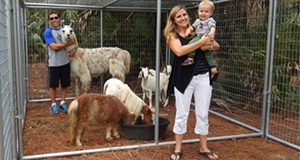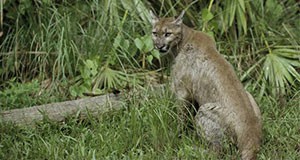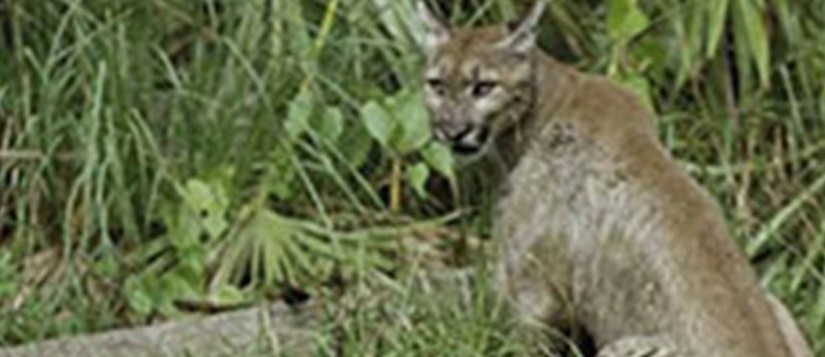
Florida panthers once ranged throughout most of the southeastern United States, but loss of habitat and efforts to eradicate panthers during the 1800s led to a large decline throughout much of their historic range. Florida panthers were listed as an endangered species in 1967 and have been federally protected by the US Endangered Species Act since 1973. For the most part, the role of panthers in the natural environment benefits people (they prey on burgeoning populations of white-tailed deer, raccoons, opossums, and feral hogs). Panthers do sometimes kill pets and livestock in rural and residential areas in southwest Florida, however, and some people believe that panther kills happen because panther populations have grown too large or are not well-managed. In fact, the panther population is dangerously small, and most of these losses can be attributed to poor management not of panthers but of pets and livestock. To maintain support for panther conservation, it is paramount that rural residents protect and secure their pets and livestock. This 3-page fact sheet written by Phillip D. Rodgers, Elizabeth F. Pienaar, Mark Lotz, and Darrell Land and published by the UF Department of Wildlife Ecology and Conservation explains how to make a locking, secure enclosure to protect livestock from panther predation–and protect the fragile panther, as well.
http://edis.ifas.ufl.edu/uw423
Tag: Mark Lotz
Managing Conflicts with Wildlife: Living with Panthers
 Panthers help maintain populations of some native species and control nuisance species such as wild hogs. They are generally secretive and rarely bother people, but there are rare situations where panthers can become dangerous or damaging. In this 4-page fact sheet, we present some facts about panthers, describe dangers and problems they may cause, and provide suggestions on how to cope with these issues. Written by William M. Giuliano, Holly K. Ober, Lauren Watine, Raoul Boughton, Eric Hellgren, Darrell Land, and Mark Lotz, and published by the UF Department of Wildlife Ecology and Conservation, December 2014.
Panthers help maintain populations of some native species and control nuisance species such as wild hogs. They are generally secretive and rarely bother people, but there are rare situations where panthers can become dangerous or damaging. In this 4-page fact sheet, we present some facts about panthers, describe dangers and problems they may cause, and provide suggestions on how to cope with these issues. Written by William M. Giuliano, Holly K. Ober, Lauren Watine, Raoul Boughton, Eric Hellgren, Darrell Land, and Mark Lotz, and published by the UF Department of Wildlife Ecology and Conservation, December 2014.
http://edis.ifas.ufl.edu/uw399
